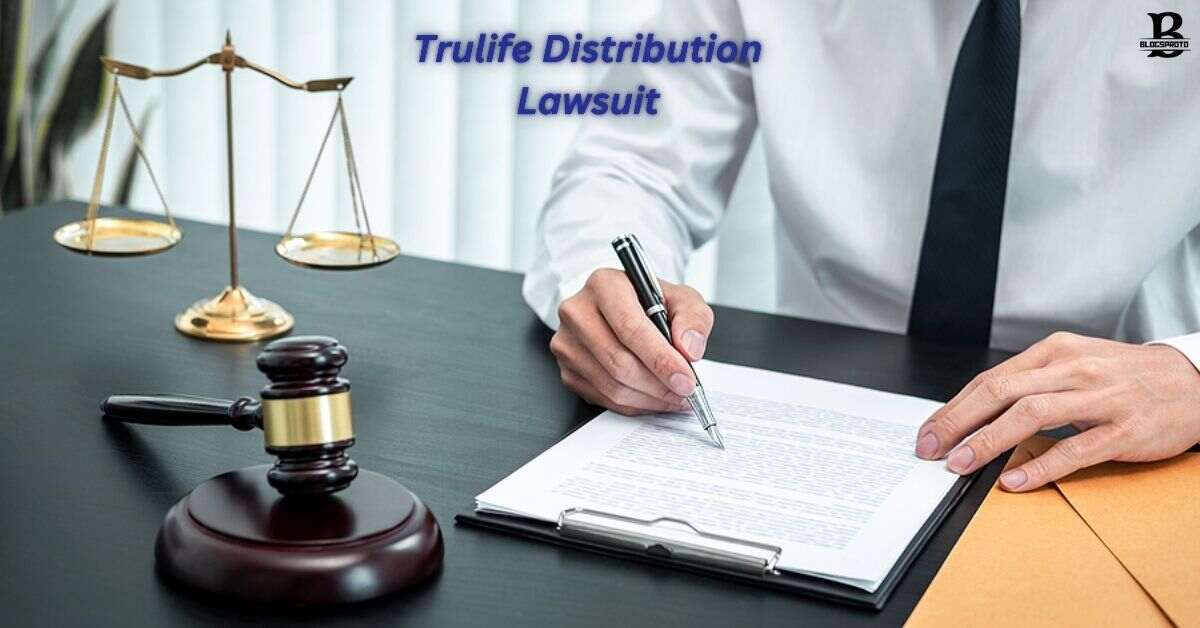The Trulife Dispersion claim is a critical lawful case including charges of extortion and agreement breaks. This case emerged from disagreements about strategic policies and administrative consistence. Understanding Trulife Dispersion’s tasks is vital to getting a handle on the claim’s unique circumstance. The legitimate cycle is mind boggling, including various stages and gatherings.
The claim’s result could have significant ramifications for the organization and the business. Expected punishments and changes in strategic approaches might result. Shoppers and different organizations could likewise feel the impacts. The case features the significance of moral and straightforward business activities.
How to Understand Trulife Distribution
Trulife Conveyance is an organization engaged with the dispersion of different items, zeroing in on quality and consistence with industry norms. Understanding the business tasks of Trulife Circulation is significant, as it sets the setting for the claim. The organization’s job in the store network and its connections with the two providers and purchasers give knowledge into the charges and legitimate difficulties it faces.
How the Lawsuit Came to Be
The claim against Trulife Circulation arose because of supposed breaks of agreement, distortion, and conceivable administrative infringement. The starting points of the lawful debate can be followed back to explicit exchanges and strategic policies that were raised doubt about by impacted parties. Dissecting these underlying contentions helps in understanding the legitimate grounds on which the claim was recorded.
Figuring Out Legal Terms

Authoritative archives and procedures frequently contain complex wording that can be trying to decipher. Finding out about fundamental legitimate terms utilized in the Trulife Circulation claim helps in getting a handle on the case’s complexities. Key terms incorporate “break of agreement,” “offended party,” “respondent,” and “prosecution,” which are fundamental for figuring out the legitimate contentions and court choices.
Breaking Down Legal Jargon
Legitimate language can darken current realities and subtleties of a case. Working on the language utilized in authoritative reports and court procedures connected with the Trulife Appropriation claim makes the data more available. This includes making an interpretation of intricate legitimate expressions into plain English to assist the overall population and partners with bettering figure out the case.
What the Allegations Are About
The core allegations against Trulife Distribution include claims of fraudulent business practices, failure to meet contractual obligations, and potential violations of consumer protection laws. These accusations suggest that the company may have engaged in activities that harmed other businesses and consumers, prompting legal action.
Read this blog : Aaron Wohl Arrested
People Involved
The lawsuit involves multiple parties, including plaintiffs who have brought the case against Trulife Distribution, and the defendants, which include the company’s executives and possibly other associated individuals. Key legal representatives and their roles in the case are also crucial for understanding the dynamics of the lawsuit.
A Look at the Legal Process
The legal process for the Trulife Distribution lawsuit involves several stages, from the initial filing of the complaint to pre-trial motions, discovery, trial, and potentially appeals.
Each phase of the process plays a significant role in how the case develops and is ultimately resolved. Understanding these stages helps in tracking the lawsuit’s progress.
The Path to Justice

The pursuit of justice in the Trulife Distribution case involves navigating the legal system to address grievances and seek remedies. This includes court hearings, negotiations, and possible settlements. The path to justice is often complex and requires a thorough examination of evidence and legal arguments.
Schedules and Delays
Legal proceedings are subject to schedules and potential delays. Court calendars, procedural requirements, and unforeseen circumstances can all impact the timeline of the Trulife Distribution lawsuit. Awareness of these factors helps in managing expectations regarding the case’s resolution.
Possible Consequences
The potential consequences of the lawsuit for Trulife Distribution include financial penalties, mandatory changes in business practices, and reputational damage. The outcome of the case could also set legal precedents affecting future industry practices and regulatory standards.
Read this blog : Exploring the Culture and Cuisine of Honduras: Ondureña
Effects on Consumers
Product Availability: Potential changes in the availability of products distributed by Trulife, depending on the outcome of the lawsuit.
Product Quality: Possible improvements or declines in product quality as a result of legal scrutiny and regulatory pressure.
Pricing Changes: Alterations in product pricing due to financial penalties or changes in business operations.
Consumer Trust: Impact on consumer trust and confidence in Trulife Distribution and similar companies.
Legal Precedents: Influence on future consumer protection laws and regulatory standards, potentially enhancing consumer rights and safety.
Market Stability: Effects on the overall stability and competitiveness of the market, potentially affecting consumer choices and options.
Effects on the Industry

Regulatory Oversight: The lawsuit may lead to increased scrutiny and tighter regulations within the industry to prevent similar issues.
Business Practices: Companies might adopt more rigorous compliance and ethical standards to mitigate legal risks.
Industry Standards: The case could set new benchmarks for contractual obligations and consumer protection measures.
Reputational Impact: Industry reputation may be affected, prompting businesses to enhance transparency and accountability.
Competitive Dynamics: Other companies might gain a competitive edge by proactively addressing the issues highlighted in the lawsuit.
Frequently Asked Question
What are the key allegations against Trulife Distribution?
The allegations focus on fraud, misrepresentation, and regulatory violations.
How did the lawsuit against Trulife Distribution start?
The lawsuit began due to disputes over specific transactions and business practices.
What potential consequences could Trulife Distribution face?
Possible consequences include financial penalties, business practice changes, and reputational damage.
How might the lawsuit affect the broader industry?
It could lead to tighter regulations, higher compliance standards, and changes in industry practices.
What impact could the lawsuit have on consumers?
Consumers might see changes in product availability, quality, pricing, and trust in the industry.
Conclusion
The Trulife Circulation claim addresses a critical lawful test with colossal ramifications for the organization, its partners, and the more extensive industry. The case highlights the significance of sticking to legally binding commitments and keeping up with straightforward, moral strategic policies. As the claim advances, it will probably incite expanded administrative investigation and motivate different organizations to embrace more rigid consistence measures.
The potential results incorporate monetary punishments, reputational harm, and changes in industry guidelines. Additionally, buyers and organizations the same will observe intently, as the case could impact future lawful points of reference and industry elements. At last, the Trulife Circulation claim fills in as a basic sign of the lawful and moral obligations that organizations should maintain to guarantee trust and uprightness in their tasks.

Maxwell Brooks, a prolific wordsmith on BlogsProto.com, navigates literary realms with grace. His prose dances through genres, captivating readers with tales that resonate, leaving an indelible mark on the digital literary landscape.











